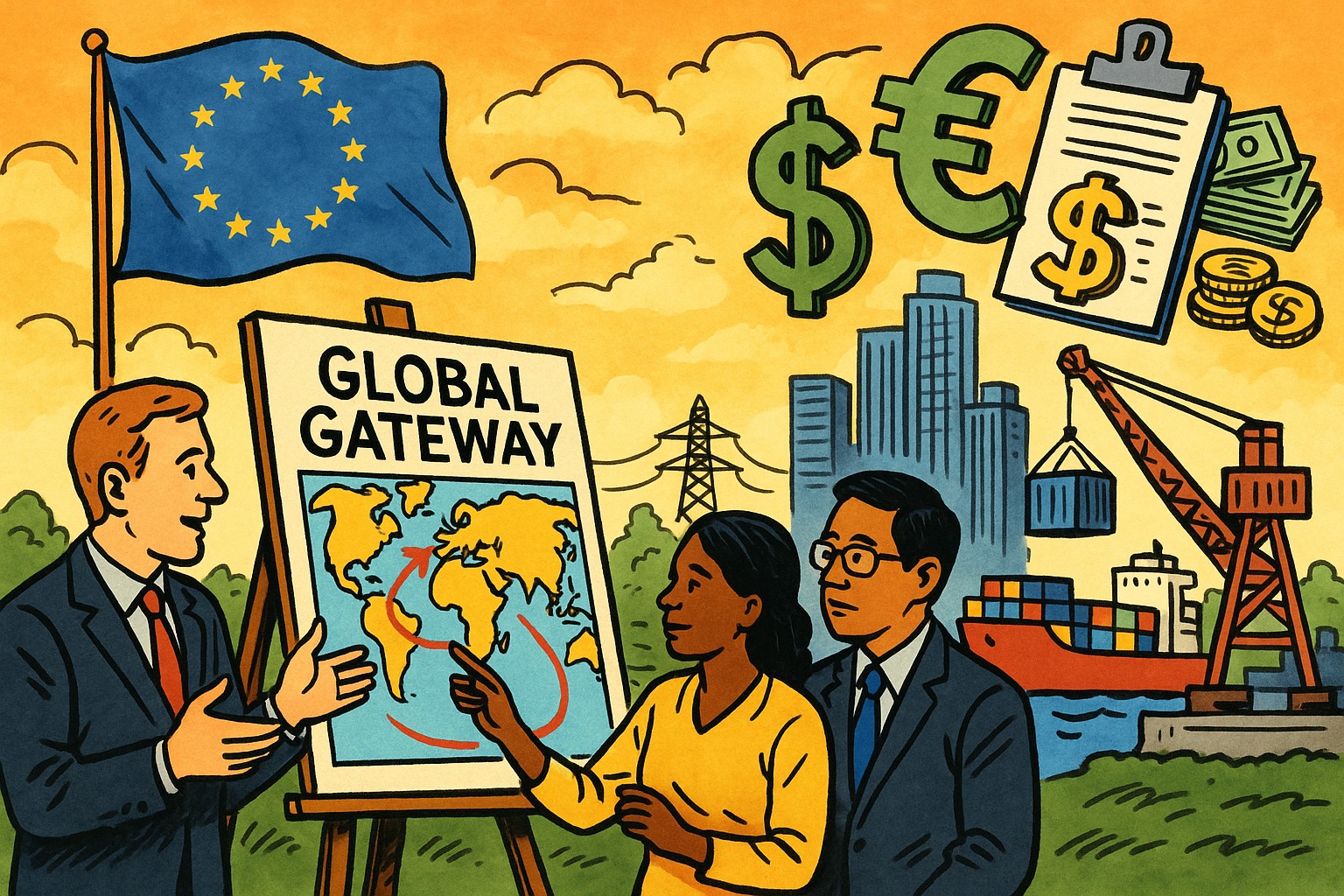
The European Union’s Global Gateway (GG) has been presented as the Union’s flagship initiative to mobilise up to €300 billion in sustainable infrastructure and connectivity investment worldwide between 2021 and 2027. More than four years into its implementation, however, the strategy still faces the challenge of moving from political ambition to practical delivery. A recent ECDPM discussion paper, “Implementing EU development and trade finance enhanced coordination under the Global Gateway strategy” (September 2025), offers a roadmap to make the initiative more coherent, competitive, and strategically relevant.
Why coordination matters
At the core of the analysis lies the need for stronger coordination between Export Credit Agencies (ECAs) and Development Finance Institutions (DFIs). ECAs traditionally support European firms’ exports and outward investments by providing loans, guarantees, and insurance. DFIs, in turn, focus on development objectives in partner countries. Until now, they have largely operated in parallel, with different mandates and limited cooperation. Meanwhile, competitors such as China and Japan are advancing integrated state-backed financial models that combine development and export finance seamlessly. If the EU wants to level the playing field, it needs to break institutional silos and build a more integrated financial offer.
From “Team National” to “Team Europe”
The authors argue that successful project origination must begin at the member state level (“Team National”), where ECAs, DFIs, development agencies, and private actors can identify viable projects based on partner-country needs. These projects should then feed into a structured European framework (“Team Europe”), which would scale and align them with EU strategic priorities. This model would combine national ownership with European leverage, creating a pipeline of projects that are both bankable and geopolitically significant.
Designing smart financial instruments
A central part of the recommendations concerns the design of fit-for-purpose financial tools:
- An EU guarantee mechanism, ideally channelled through the European Investment Bank Group (EIBG), to de-risk projects by covering sovereign, currency, or offtake risks. Different models – portfolio guarantees, reinsurance schemes, or dedicated funds – could be pursued in parallel to maximise flexibility.
- Blending grants to cover early-stage costs such as feasibility studies, environmental assessments, or bid preparation, making it easier for European firms, especially SMEs, to enter new markets.
- Technical assistance (TA) to strengthen project preparation and ensure alignment with local needs and sustainability standards.
Together, these instruments would create a “financial toolbox” capable of mobilising both public and private capital while ensuring projects meet EU development and geoeconomic objectives.
Redefining criteria: EU interests and resilience
The paper highlights the importance of establishing clear eligibility and selection criteria for GG projects. Beyond development goals, projects should be assessed against European interests – such as minimum EU content, value creation within the Union, and compliance with EU safety and ESG standards – and their contribution to resilience, defined as the ability to reduce strategic dependencies and strengthen the EU’s autonomy in critical sectors. This shift reflects a broader move towards using Global Gateway not only as a development instrument but also as a geopolitical tool for economic security and competitiveness.
Communication and visibility
Finally, the report stresses the need for strategic communication. To build credibility, the EU must highlight concrete success stories, demonstrate private sector mobilisation, and show how GG projects benefit both partner countries and European industry. A light but effective results framework, with indicators such as private capital mobilised or flagship projects delivered, would help make the initiative more transparent and impactful.
Conclusion: From start-up to scale-up
The ECDPM paper makes a strong case that Global Gateway must evolve from a branding exercise into a strategic delivery model of EU foreign economic policy. This requires a shift from fragmented national initiatives to a coherent, EU-level system, backed by smart financial mechanisms and clear strategic criteria. By harnessing the complementary strengths of ECAs and DFIs, the EU can position itself as a competitive global player, advancing sustainable development abroad while safeguarding its own economic and geostrategic interests.
Summary by DigitalTrade4.EU
